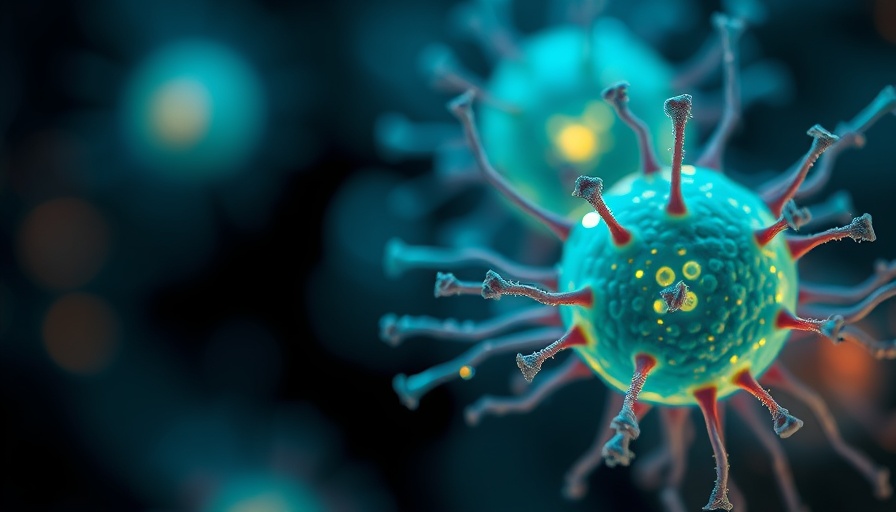
Understanding GSDME's Role in Hematopoietic Injury
The intricacies of cellular rejuvenation during cancer therapies reveal notable challenges, particularly concerning bone marrow (BM) suppression induced by chemotherapy and radiotherapy. Central to this discussion is Gasdermin E (GSDME), a protein linked to apoptosis and pyroptosis. Recent findings indicate that GSDME knockout mitigates hematopoietic stem cell (HSC) injury caused by ionizing radiation (IR), suggesting a shift in focus towards cellular health and regenerative strategies in cancer treatment.
What We Found: The Protective Role of GSDME
Recent studies on C57BL/6 and Gsdme−/− mice illuminated GSDME's dual role in both protecting HSCs from acute depression and influencing long-term recovery dynamics post-IR exposure. The knockout of GSDME notably reduced HSC proliferation and survival time, indicating that while GSDME serves protective functions, its absence accelerates myeloid-biased differentiation. This means that patients undergoing radiation therapy could benefit from better understanding GSDME's mechanisms, leading to new therapeutic avenues in regenerative medicine.
Why GSDME Matters: Implications for Stem Cell Therapy
This discovery underscores GSDME's critical role not only for hematopoietic recovery but also for potential interventions focusing on anti-aging cells. In regenerative medicine, strategies enhancing GSDME functionality could optimize stem cell therapies, particularly for individuals undergoing treatments that compromise cellular rejuvenation—the very core of maintaining vitality and youthfulness.
Navigating the Future: Enhancing Mitochondrial Function
The future landscape of cancer treatment may revolve around cellular repair and autophagy benefits, making mitochondrial function paramount in HSC health. Enhancing oxidative mitochondrial functions and cellular repair processes could potentiate outcomes for recovery from radiation therapy. The intersection of NAD+ boosters and novel autophagy techniques could emerge as a cornerstone in reshaping HSC resilience against chemotherapy-induced injuries.
Counterarguments: Balancing Myeloid Bias
While the benefits of GSDME knockout in alleviating BM injury are promising, one must consider the trade-offs associated with increased myeloid differentiation. Lack of GSDME may compromise lymphocyte recovery, suggesting that therapies aiming at HSC protection must reconcile the myeloid bias with overall immune balance, a crucial factor not only for cancer recovery but for long-term cellular health.
Actionable Insights: What This Means for Health-Conscious Individuals
For health-conscious individuals aged 30-55 looking to enhance cellular health, understanding and applying insights related to GSDME's function is essential. Emphasizing dietary choices that support mitochondrial function, alongside exploring the benefits of NAD+ boosters, could align with strategies that promote longevity. Incorporating principles of cellular rejuvenation can aid in the overall pursuit of vitality and well-being.
This foundational knowledge presents an opportunity for proactive engagement with emerging therapies and research, enhancing not just immediate health outcomes but also long-term regenerative potential. Embrace the transformative potential of understanding cellular mechanics and consider how new research can actively shape our approach to health and longevity.
 Add Row
Add Row  Add
Add 




Write A Comment